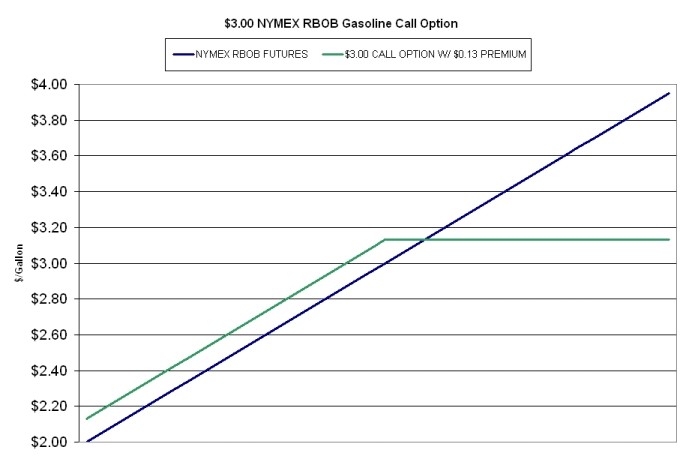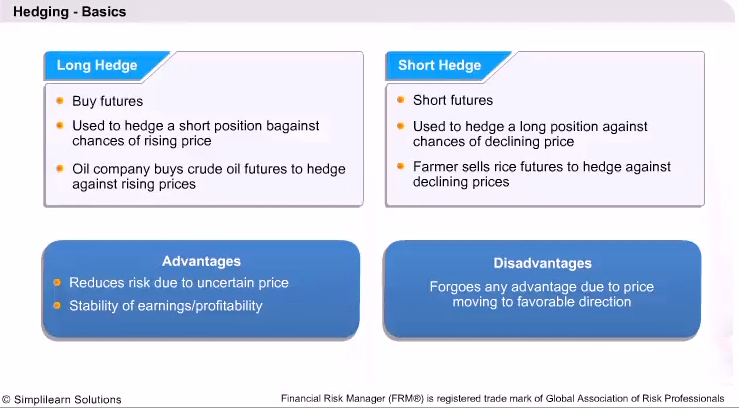The basics of hedging
Post on: 16 Май, 2015 No Comment

The recent increase in volatility is causing a major shift in the marketplace. Accounts that five years ago swore that there was no need to learn how to hedge are attending classes. Marketers that scoffed at the idea that the age-old practice of midnight pricing would someday be a thing of the past are now changing prices at 6 p.m. or twice per day, or even going to real-time pricing.
This current increase in the daily movement of energy prices can be thought of as an evolutionary change. Those that are going to survive will make these changes. Some will make them gradually and others will leap right to real-time pricing. Make no mistake, as with evolution, these changes will leave some fallen dinosaurs behind.
What a hedge is
Hedging is the purposeful act of attempting to reduce price risk. A hedge is described as an equal-and-opposite transaction; equal quantities of the hedging tool (futures, swaps or options) to the physical position being hedged, and the hedging tool must have the opposite risk profile as the physical position being hedged.
An example would be a reseller that buys 210,000 gallons of fuel and places it in his bulk storage facility. To protect this purchase he sells 210,000 gallons of futures (equal and opposite). These positions need to be kept in balance.
When this reseller sells 42,000 gallons of the physical fuel, his position is now out of balance, and he needs to buy back 42,000 gallons to keep his hedge position balanced. When he does this, the customers position is now back in balance, 168,000 gallons of physical fuel hedged with a sale of 168,000 gallons of futures.
Therefore, there are four primary reasons to hedge:
To protect a purchase against price decline.
To protect a sale against price increase.
To protect an anticipated purchase against a price increase.
To protect an anticipated sale against a price decline.
What a hedge is not
Hedging is not taking a speculative position in the futures market and hoping that it makes money. Hedging is not taking an offsetting position to your physical risk and then thinking that the hedge only makes money if the futures (or swap or option) portion of the hedge has a gain. Hedging is not taking a position in a commodity different from the one in which you have physical risk.
The result of a hedge MUST ALWAYS be judged as the NET EFFECT of the gain or loss on the physical position plus the gain or loss on the hedging tool.
Who are energy hedgers?
The following examples do not list all potential hedgers or all potential types of hedges that they would use.
Crude-oil producer
The crude-oil producer hedges by selling futures, selling swaps or buying put options to protect against lower prices. These positions are liquidated as they sell the crude.
Crude-oil gatherer
The gatherer buys crude from the producer and hedges this by selling futures, selling swaps or buying put options that are liquidated when the crude is sold to the refiner. These barrels may be in transit from a foreign country.
The refiner hedges against potential price increases in the cost of crude oil by buying futures, buying swaps or buying call options. Many times the refiner will place a simultaneous sale of gasoline and heating oil to protect against the possibility of selling the products produced at a lower price. This simultaneous purchase of crude futures and the selling of gasoline and heating oil futures is known as locking in the crack spread, which essentially locks in a refining margin.
A pipeline shipper purchases products and places them in the pipeline for transport to various rack locations. A shipper will sell futures, sell swaps or buy put options to protect these products against price decline and will liquidate them as the products are sold.
Wholesaler
A wholesaler will purchase fuel on a forward contract and hedge this purchase against a price decline by selling futures, selling swaps or buying put options. Wholesalers also make forward contract sales, and these are protected against price increases by buying futures, buying swaps or buying call options.

Retailers have two areas of risk, margins and inventory. Retailers experience margin decline during periods of rapid price increases. There are a variety of methods used to protect retail margins. FCStones HedgeSmart for Retailers has had excellent results in protecting retail margins.
Inventory can be protected against price decline by selling futures, selling swaps or buying put options. Remember, this is regardless of how fast you turn your inventory or if it is branded or unbranded. Forward contract purchases and inventory are hedged in exactly the same manner. A forward contract purchase is simply inventory that has not been moved to your tanks.
End-users
End-users such as trucking companies, fleets, railroads, airlines, construction companies and manufacturing plants either protect contract purchases from price declines by selling futures, selling swaps or buying put options, or protect anticipated purchases from price increases by buying futures, buying swaps or buying call options. It is vastly important to these types of hedgers, especially to those firms that are publicly traded, that they have their budgeted fuel price protected so that they know that a worst-case scenario is to meet budget, and that beating budget is a possibility.
Freight shippers
Fuel-price increases have caused most companies that ship products to experience an increase in freight surcharges of about 15 percent to 20 percent of their freight bill. Many of these companies have adopted a hedging policy to protect them against higher surcharges.
Conclusion
I have been assisting firms with their hedging needs for over 25 years and have seen many firms that hedged correctly, and unfortunately I have seen my share of firms that simply wanted to speculate and call it hedging. Those in the latter group seldom have long-term programs. Hedging is not speculating, and speculating is not hedging. This simple concept is very difficult to grasp for some folks.
Hedging is a generally accepted business practice and as such should be undertaken as part of the business process. Each firm needs a written risk-management policy describing the hedging program, what types of trades are approved, what commodities are approved to be hedged along with quantity and time-frame limits, plus what hedging tools are approved to be used. Having an approved written plan will give the personnel doing the hedging greater comfort knowing that they are operating within approved guidelines.
Anyone contemplating a hedging program should attend a hedging class. Self-education can have a high tuition cost. Do some research on these classes before you spend the money to attend them. Although they are billed as hedging classes, many of these seminars are simply classes on how to speculate and can lead you to the dark side.
Analyze your risk. Dont be afraid to ask for assistance. View the hedging process in the proper context. This is a very difficult task for most firms new to hedging. Never look at one side of a hedge. Always look at the NET RESULTS of the physical position and the hedging tool. Looking at one side of the hedge alone can turn you into a yeahbutif, this is someone that says Yeah, but if I had done it differently.
Next time we will discuss basis, what it is and how to put it to work for you.
James M. Burr is the vice president of FCStone. You can reach him at (816) 457-6217.














